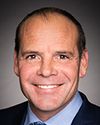Good afternoon, members of the Standing Committee on Transport, Infrastructure and Communities.
My name is Micheline Lagarde, and I am the chair of the Comité pour la protection des berges du Saint-Laurent. Carine Durocher is our vice-chair. Our committee is made up of volunteer members.
We are here today to inform you about the disaster we are currently witnessing. Commercial shipping is everywhere in the municipalities of Varennes, Verchères and Contrecœur. More than 2,000 ships a year pass through this river corridor, which extends, approximately 600 metres or less from the shoreline, over nearly 25 kilometres.
Shoreline erosion has been causing damage for a long time, particularly in this area, and is largely the result of ongoing construction and dredging of the shipping channel, year-round shipping traffic and wave action caused by ships and boats. Many studies clearly point the finger at wave action. References to those studies are provided in the brief we have submitted to you.
The government at first clearly understood the need to protect the shorelines and built protective works, but, in 1997, as part of its effort to fight the deficit, it terminated the assistance it had been providing, leaving citizens without the necessary resources. Erosion has only worsened over time and resulted in dangerous situations, including overhanging walls, collapsing works and eroded land, leaving steep slopes that are deteriorating at an increasing pace.
I am speaking here about our experience, about what we are observing locally, what we can see with our own eyes. On the islands in the area, we also see much more serious erosion on the banks exposed to commercial shipping.
We acknowledge that commercial shipping is a very important economic lever and that there is a general wish to expand that economy and make it more competitive internationally. However, as it grows by making billions of dollars in profits, citizens are left to their own devices and must suffer the economic and environmental consequences of this industry, which include the loss of their life savings and the psychological and financial stress that undermines the health of citizens who are facing a very real threat.
The government has a responsibility to protect its citizens and must allocate some of those profits to protect the shorelines. It is inconceivable that citizens should be responsible for ensuring that the shorelines of the St. Lawrence River survive without the government's full support.
Marine transport must go green as soon as possible. We acknowledge that the lower voluntary speed limit that has gone into effect is a positive factor, but that doesn't prevent the wakes and waves from relentlessly continuing to destroy the shorelines. The government is responsible for transport and its impact and must address both.
Since shipping is definitely causing erosion, at a time when water is an increasingly critical issue and the climate is warming, there is an urgent need for action.
By caring for the shorelines, we also preserve the river. However, if the government feels that this is a complex issue and that it has neither the money nor any programs to offer, and if it shirks its responsibility and refuses to act, how can citizens possibly solve these problems?
The shorelines aren't a quilt that can be pieced back together. They form a whole. If the river is a jewel, then the shorelines are its jewel box, and we must take care of them.
The artificialization of the shorelines is a challenge for the ecology of our landscape. The shorelines are losing their ability to function as a biological corridor; they can no longer support exchanges between land and water and thus are becoming inhospitable to human beings.
We ask that the Standing Committee on Transport, Infrastructure and Communities immediately recommend that a federal program be introduced to protect the shorelines affected by marine transport on the St. Lawrence River. That program is essential to the harmonious coexistence of marine transport, wildlife habitat and riparian communities.
This kind of program is essential for the Varennes, Verchères and Contrecœur region, which is particularly hard hit by the impact of shoreline erosion as a result of the narrowness of the corridor in that section of the river.
Innovative and sustainable solutions are beyond the reach of ordinary citizens and absolutely require the assistance of experts.
At a time when urgent action is needed to address the impact of shipping on the environment, shorelines, the river and biodiversity, our committee believes that consideration should be given to an intergovernmental and interdepartmental solution.
In closing, we want to thank the members of the Standing Committee on Transport, Infrastructure and Communities for this opportunity to express our views. We hope that solutions to protect the shorelines will be introduced very soon because erosion is accelerating at an alarming rate. We would also like to be involved in selecting solutions.
Thank you for your attention.










